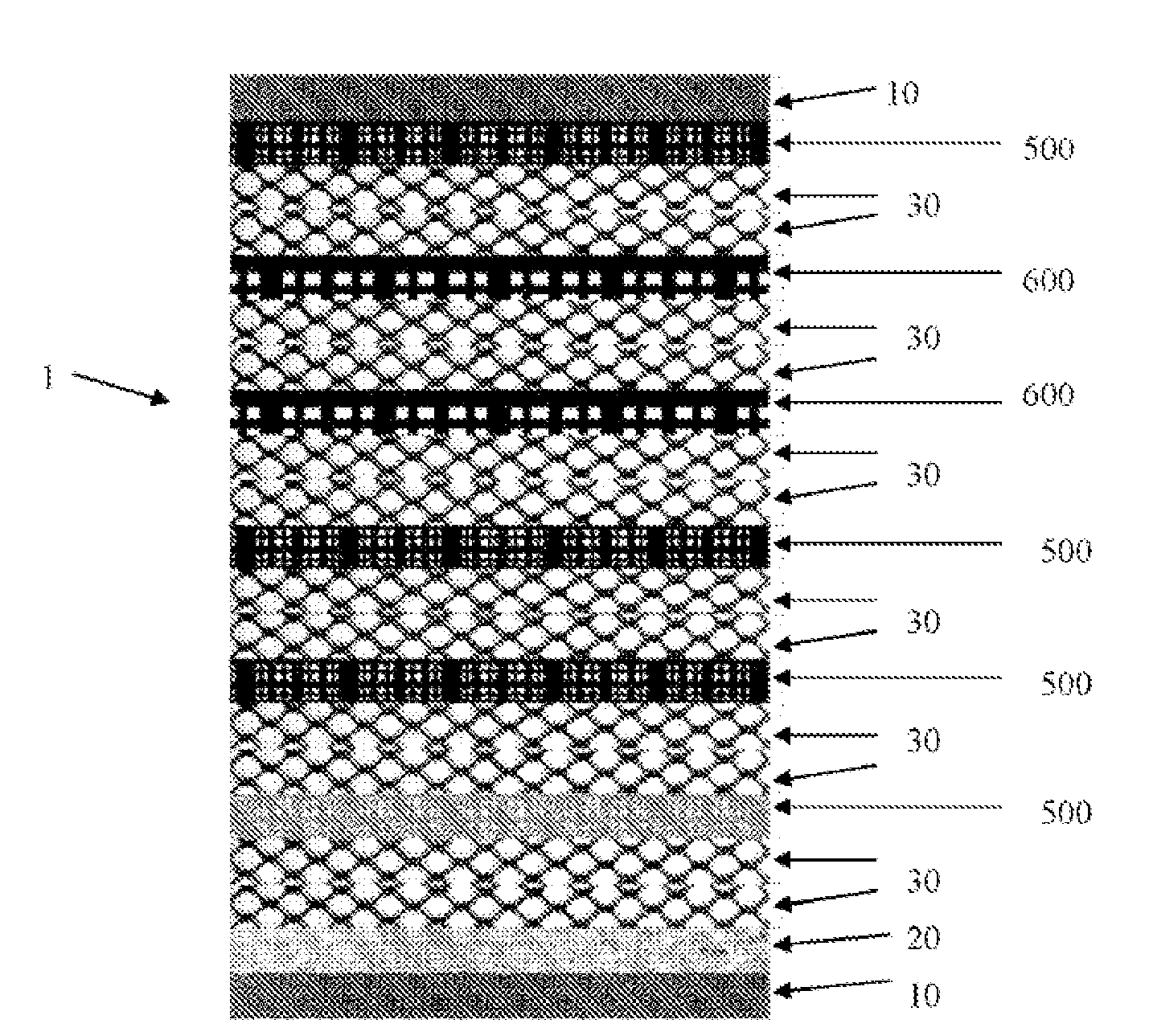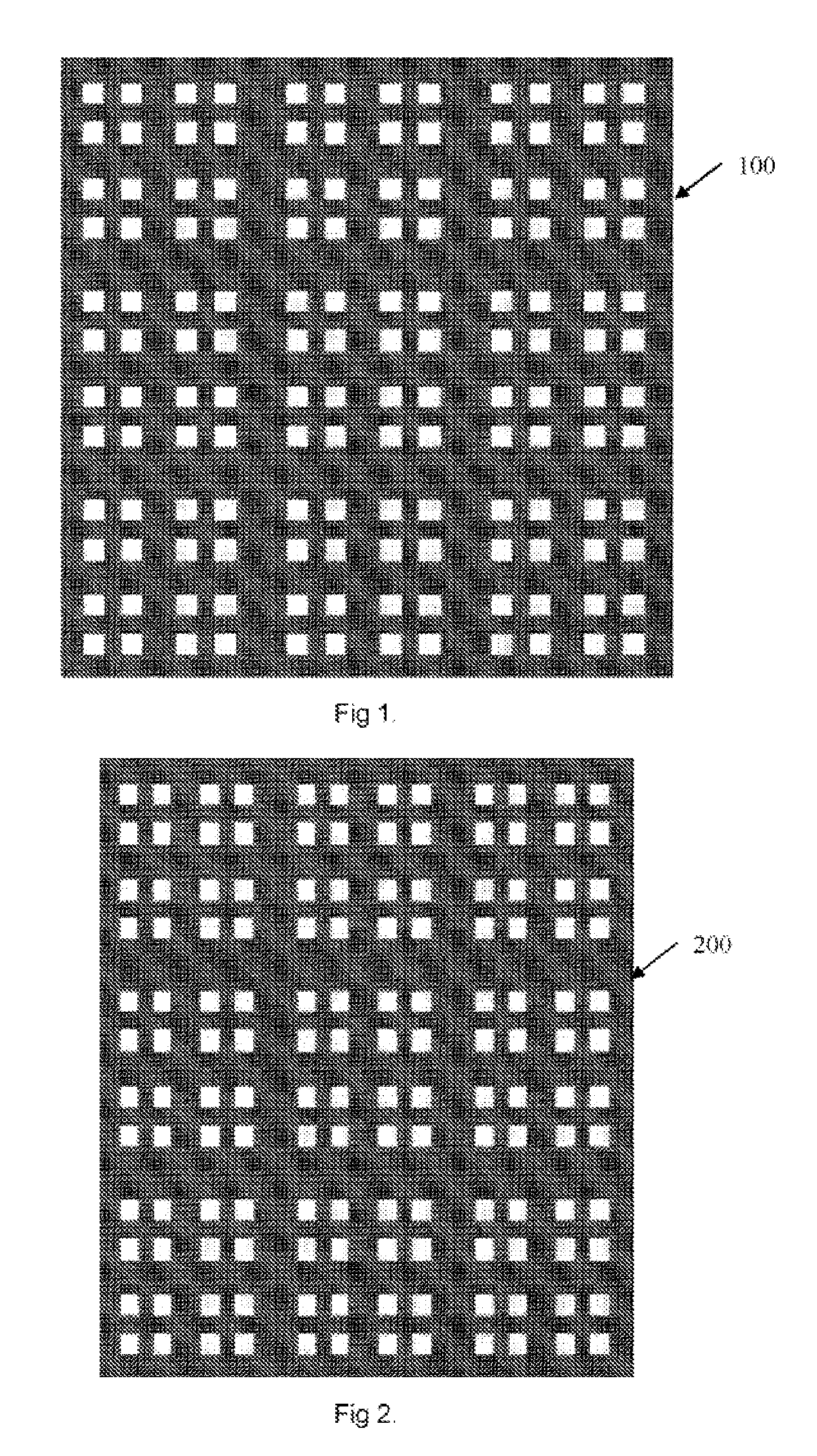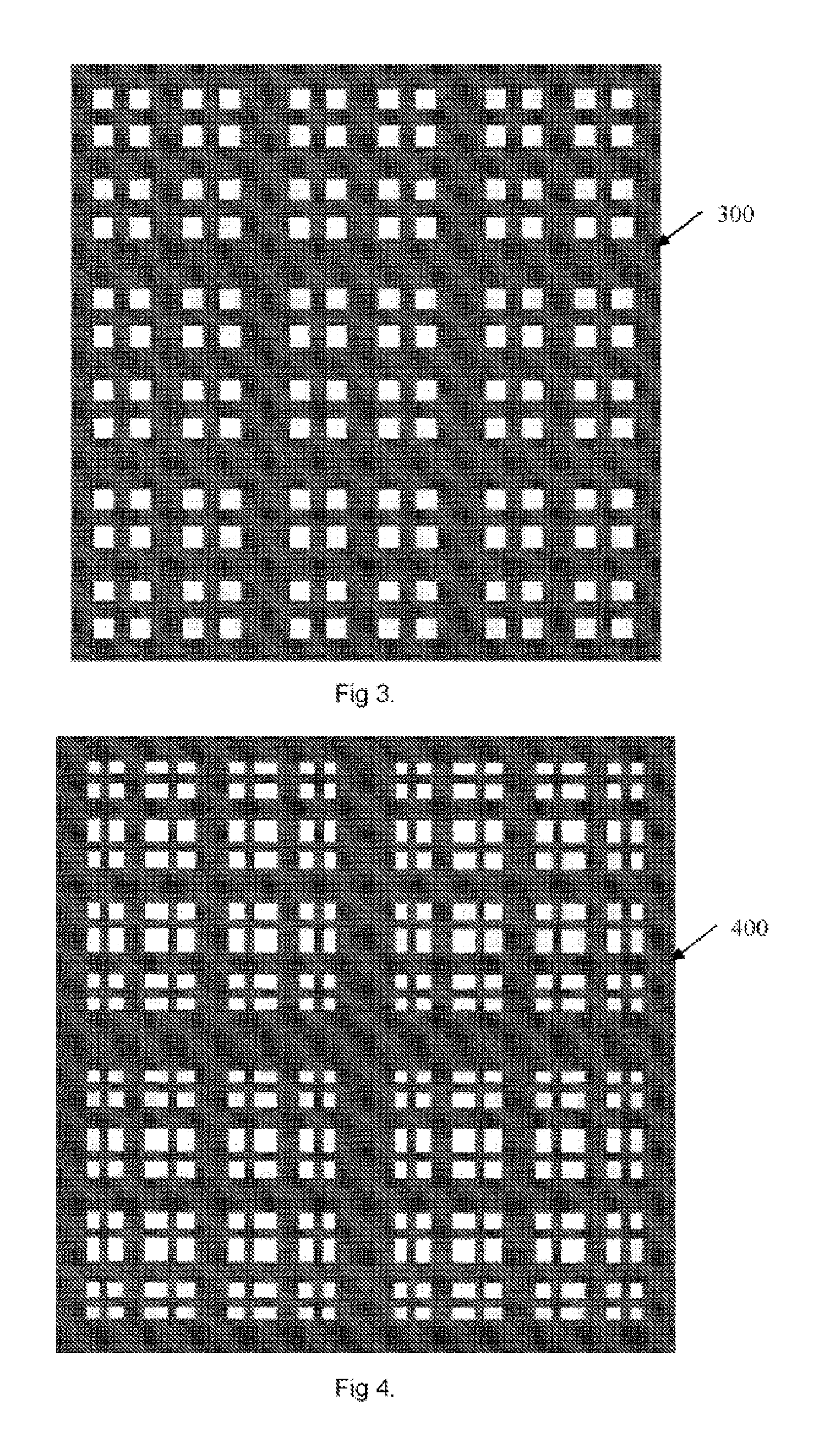Material absorbing electromagnetic waves
a technology of electromagnetic waves and materials, applied in the field of metals, can solve the problems of reducing the efficiency of electromagnetic waves, affecting the application of electromagnetic waves, and affecting the effect of electromagnetic waves, and achieve the effect of great ease in its implementation and us
- Summary
- Abstract
- Description
- Claims
- Application Information
AI Technical Summary
Benefits of technology
Problems solved by technology
Method used
Image
Examples
Embodiment Construction
[0048]FIG. 1 shows a material 100 according to the invention comprising a printed textile layer, notably by screen printing, by means of at least one conductive ink, preferentially an aqueous ink, based on carbon particles of about 300 angstroms.
[0049]The textile layer used is a non-woven textile marketed under the name of Sontara® by Dupont de Nemours having a thickness of 0.22 mm.
[0050]The textile layer comprises printed areas and non-printed areas; these are non-printed areas appearing as substantially rectangular two-dimensional periodic patches.
[0051]More specifically, the patterns of the textile layer are in this case obtained by intersected printing of lines with determined thicknesses, spaced apart, and oriented perpendicularly.
[0052]Thus, the pattern illustrated in FIG. 1 results from the repeated printing of a thick line (with a thickness e), of a thin line (thickness e / 4), of a medium line (thickness e / 2), and of a new thin line, each line being spaced apart from its neig...
PUM
| Property | Measurement | Unit |
|---|---|---|
| size | aaaaa | aaaaa |
| thickness | aaaaa | aaaaa |
| thickness | aaaaa | aaaaa |
Abstract
Description
Claims
Application Information
 Login to View More
Login to View More - R&D
- Intellectual Property
- Life Sciences
- Materials
- Tech Scout
- Unparalleled Data Quality
- Higher Quality Content
- 60% Fewer Hallucinations
Browse by: Latest US Patents, China's latest patents, Technical Efficacy Thesaurus, Application Domain, Technology Topic, Popular Technical Reports.
© 2025 PatSnap. All rights reserved.Legal|Privacy policy|Modern Slavery Act Transparency Statement|Sitemap|About US| Contact US: help@patsnap.com



